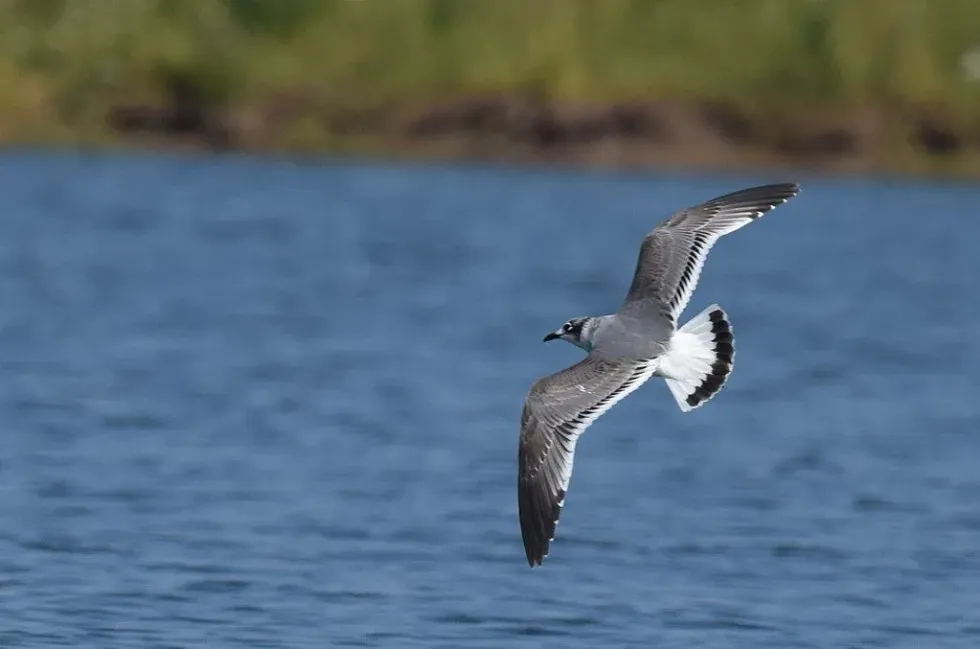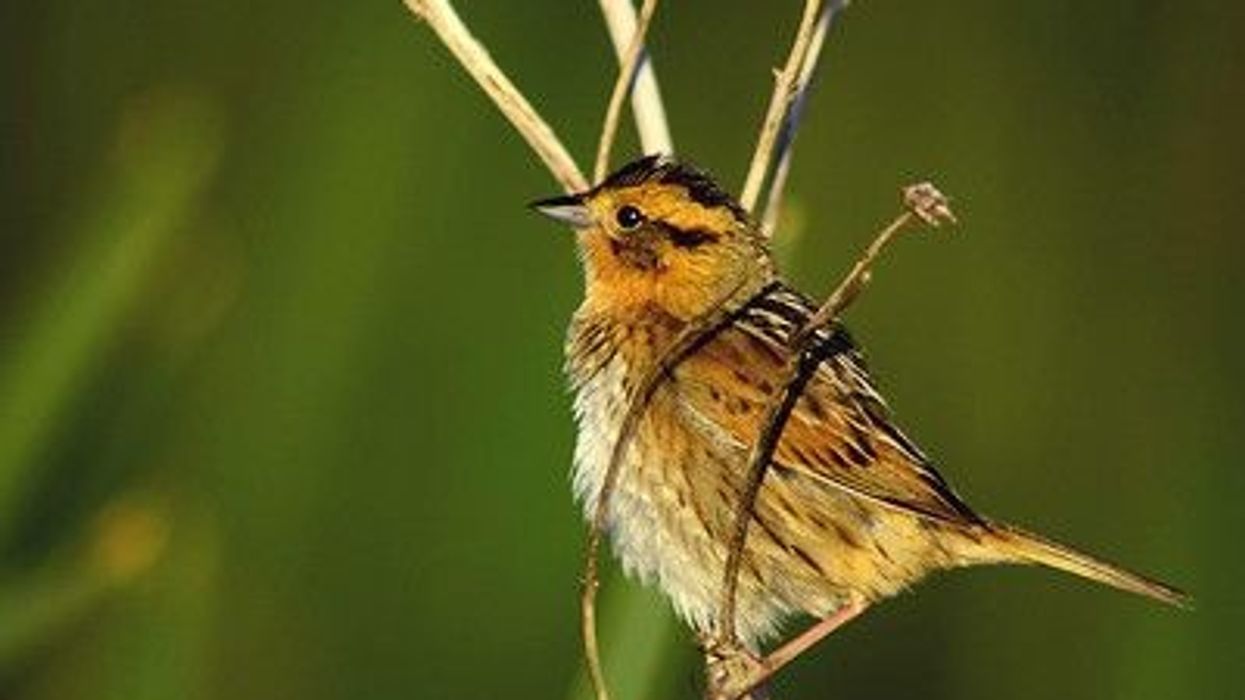The Franklin's gull bird is a young, dove-like gull. It belongs to the Aves class and is a species of order Charadriiformes, family Laridae with scientific name L. pipixcan.
This bird is 12.6-14.2 in (32-36 cm) long and weighs around 8.1-10.6 oz (230-300 g). They are generally found living in colonies in lakes and marshes along the west coast of South America and North America. They feed on invertebrates, insects, earthworms, sunflower seeds, wheat, and oats.
During their breeding season, both adults assemble a large mass of amphibian plants, including cattails and bulrushes to make their nest. Therefore, they usually fall under the category of Least Concern in the IUCN Red List.
For more relatable content, check out these lark sparrow facts and European starling facts for kids.
Franklin's Gull Interesting Facts
What type of animal is the Franklin's gull?
The Franklin's gull bird is a young, dove-like gull belonging to the order Charadriiformes, family Laridae, and has the scientific name L. pipixcan. A breeding grown-up has white plumage with fluidly touched pink underparts.
The upper wing is dim with tipped white secondaries and inner primaries. The five external primaries have a gray subterminal band and white tips, shaping a highly contrasting example at the wingtip.
There is a broad, white following edge. The tail is pale dim with white external rectrices. The underwing color is pale gray.
What class of animal does the Franklin's gull belong to?
Franklin's gull birds belong to the Aves class and are a species of L. pipixcan, and their family is Laridae.
How many Franklin's gulls are there in the world?
There is no clear estimate of the total number of Franklin's gulls in the world.
Where does the Franklin's gull live?
The Franklin's gull range map mainly includes lakes and marshes near the west coast of South America. Franklin's gull migration mostly occurs to the south through the Great Plains and along the eastern coastal plain of Mexico.
What is the Franklin's gull's habitat?
The Franklin's gull's bird habitat includes breeding in broad inland swamps with water, inland lakes with new vegetation, and in thick cattails of family Typha during their breeding season. The Franklin's gull winter is spent along coasts, in straights, and estuaries. During summer, this bird feeds in developed fields, grasslands, overwhelmed fields, swamps, and estuaries among their own colonies.
Who do Franklin's gulls live with?
It is not known whether Franklin's gull birds live alone or with other members of their family.
How long does the Franklin's gull live?
There is no information about the lifespan of a Franklin's gull. In any case, the oldest Franklin's gull was recorded to have lived for nine years and five months old and it was shot in Montana in 1972.
How do they reproduce?
These birds breed close to grassland lakes and the nest is built on the ground or in trees. The breeding season happens in spring, with the laying during the second half of May.
The Franklin's gull also creates a floating nest in marshes with ocean water. The two adults assemble a large mass of amphibian plants, including cattails and bulrushes, for their floating nest.
The nest is generally secured to the vegetation. It requires day-by-day support on the ground to make sure that the nest material that is beneath the surface does not rot.
Adult gulls consistently add nest material and the chicks also find nest material to add to their nesting home once hatched. They stop adding new nesting materials a month before leaving their colonies and nests. Females incubate two to three eggs for about two to three weeks.
What is their conservation status?
The conservation status of this bird is listed as Least Concern in the IUCN Red List.
Franklin's Gull Fun Facts
What do Franklin's gulls look like?
Breeding adults generally have a black head with white sickles above and beneath the eye. The upper body is dark gray, and the legs and bill are ruddy. Adolescents and immatures look like non-breeding adults yet browner above, with a gray tail band but without the wingtip design.
How cute are they?
Franklin's gull birds are considered cute, just like all other North American birds.
How do they communicate?
Not much information is available about the process of communication between the North American Franklin's gull birds (Leucophaeus pipixcan). It is fairly possible that they also communicate with others of its species using vibrations produced by their wings. A courting male's Franklin's gull call is long compared to other gull species.
How big is the Franklin's gull?
The Franklin's gull height range is 12.6-14.2 in (32-36 cm), which is a little less than a common gull whose height falls in the range of 17.3-18.1 in (44-46 cm) and belongs to a similar species.
How fast can the Franklin's gull fly?
The average range of speed that a Franklin's gull can fly at is not yet estimated by researchers. They move toward the southeast and winter essentially along the west shoreline of South America during migration.
How much does the Franklin's gull weigh?
The Franklin's gull (Leucophaeus pipixcan ) weight falls in the range of 8.1-10.6 oz (230-300 g) which is one and a half times less than a common gull which another North American bird.
What are the male and female names of the species?
Franklin's gull (Leucophaeus pipixcan) birds do not have specific names for males and females. They are referred to as a male Franklin's gull and a female Franklin's gull.
What would you call a baby Franklin's gull?
Juvenile Franklin's gull birds are known as chicks.
What do they eat?
The most common diet of Franklin's gull birds is insects, particularly bugs and nightcrawlers, alongside vegetation including sunflower seeds, wheat, and oats. Scarabs, bugs, grasshoppers, beetles, flies, midges, dragonflies, and damselflies, in addition to larval types of these bugs, consist of the eating routine during the rearing season.
Are they dangerous?
These gulls are not dangerous it humans and do not pose any harm at all.
Would they make a good pet?
No, they would not make a good pet as they need to build nests for themselves. They are not even sold at stores.
Did you know...
In the breeding plumage, and sometimes in the non-breeding plumage as well, the Franklin's gull often shows a rosy pink cast on its chest and abdomen. The shading blurs as the breeding season advances and daylight separates the color.
The gull bird is the most normal, basic transient, and winter inhabitant in North America.
The black hood of the breeding adult is mostly lost in winter.
In North America, there are 58 species of gulls known. However, the laughing's gull and Franklin's gull belong to similar species.
Franklin's gull vs. laughing gull or laughing gull vs. Franklin's gull distinction is not very dominant as laughing gulls are slightly larger than Franklin's gulls. Also, the wingtips of a laughing's gull are almost fully black without the large white spots of Franklin's.
What leg color does a Franklin's gull have?
The legs and bills of these North American birds are reddish in color.
Why is it called the Franklin's gull?
This name of this bird was named after the Arctic explorer Sir John Franklin. He led a voyage in 1832 in which the first specimen of a Franklin's gull was recorded.
Here at Kidadl, we have carefully created lots of interesting family-friendly animal facts for everyone to discover! Learn more about some other birds from these metallic starling facts and violet-backed starling facts pages.
You can even occupy yourself at home by coloring in one of our free printable franklin's gull coloring pages.









